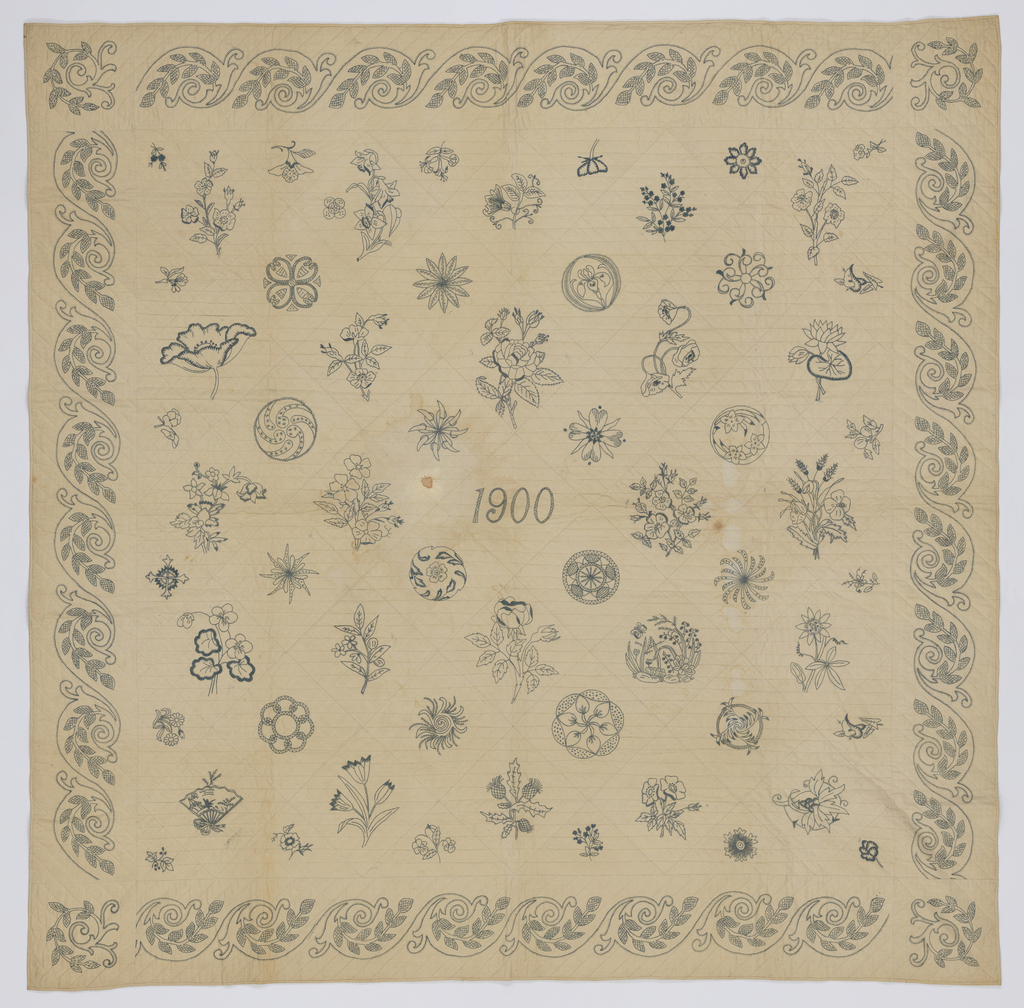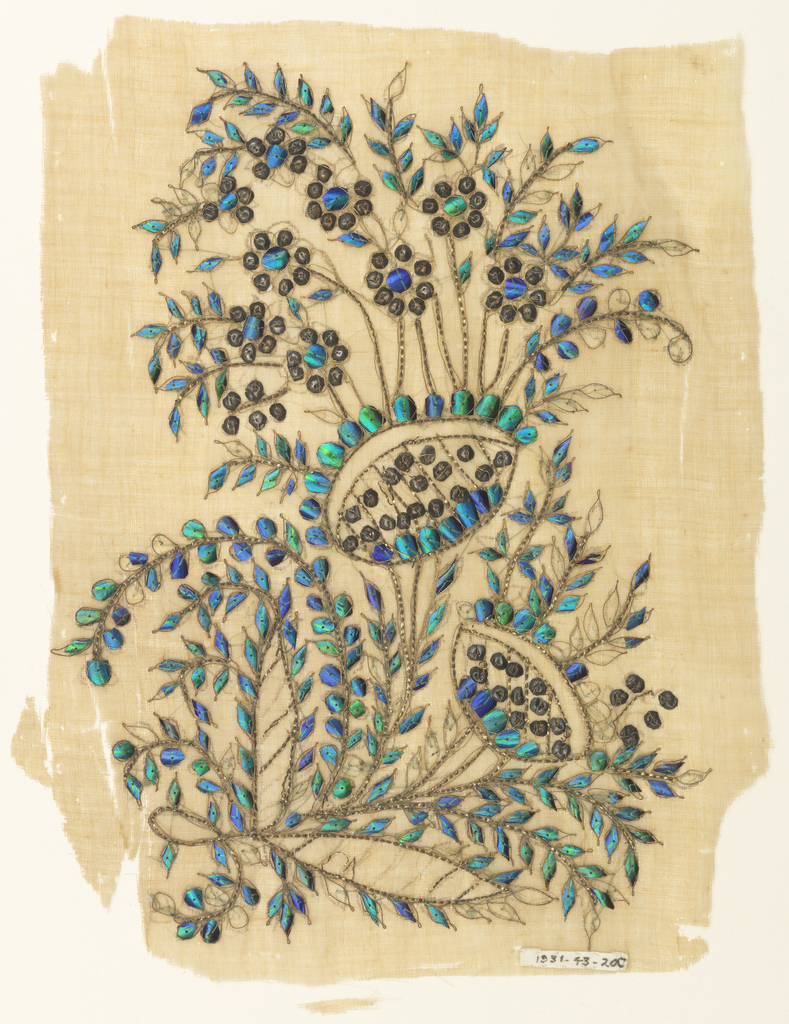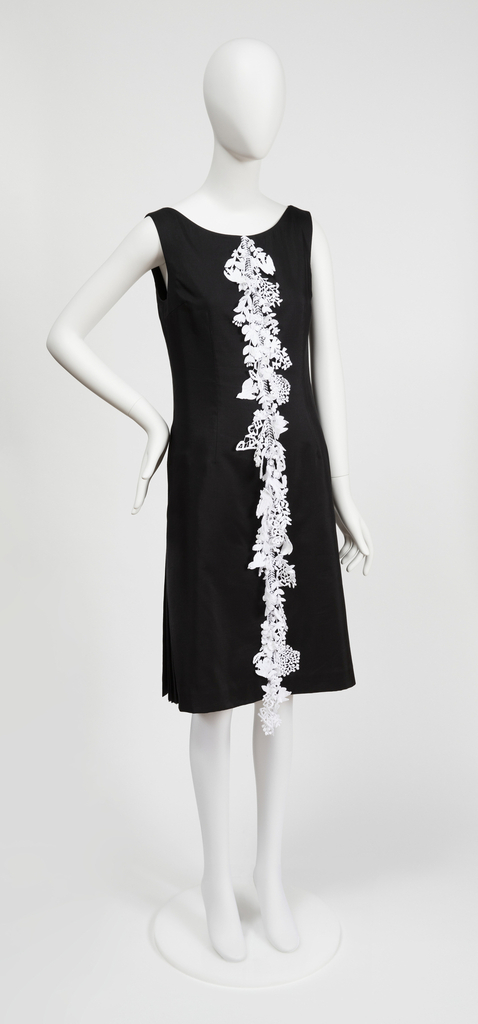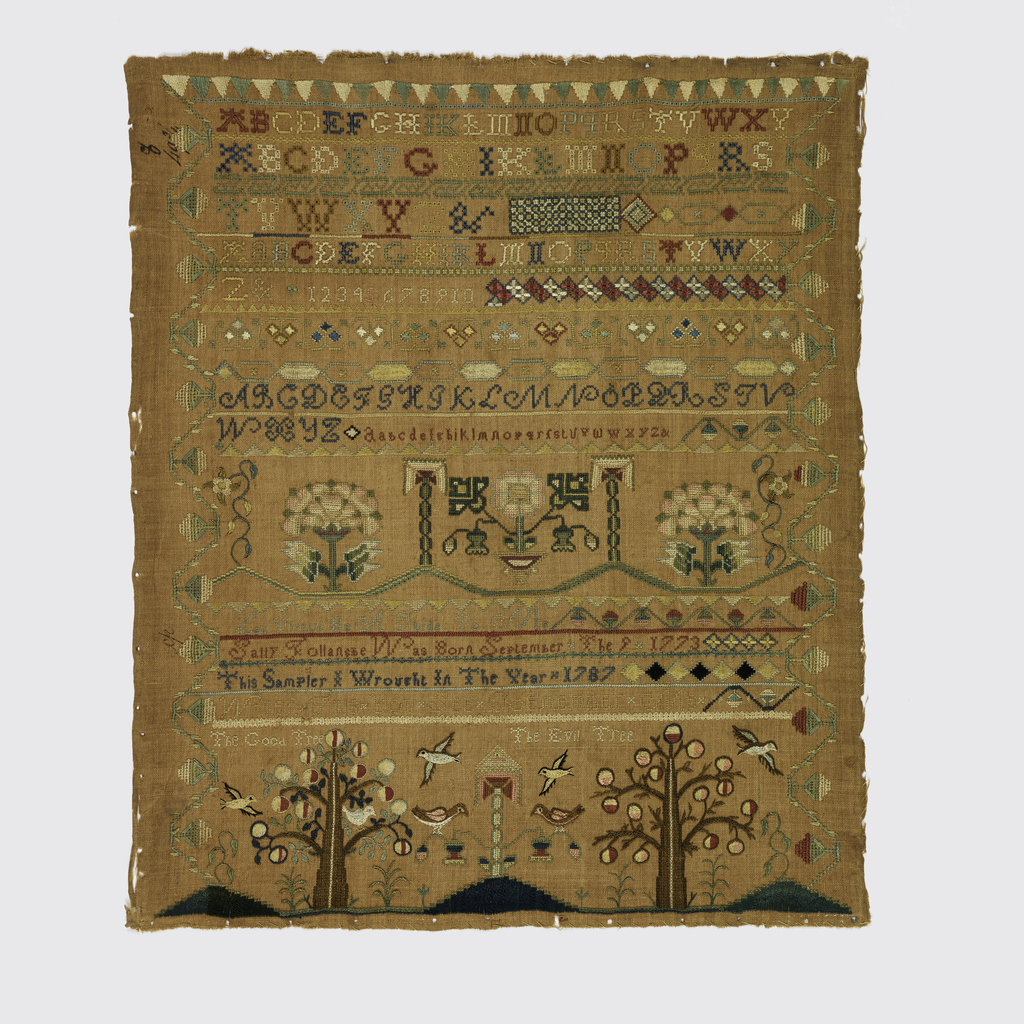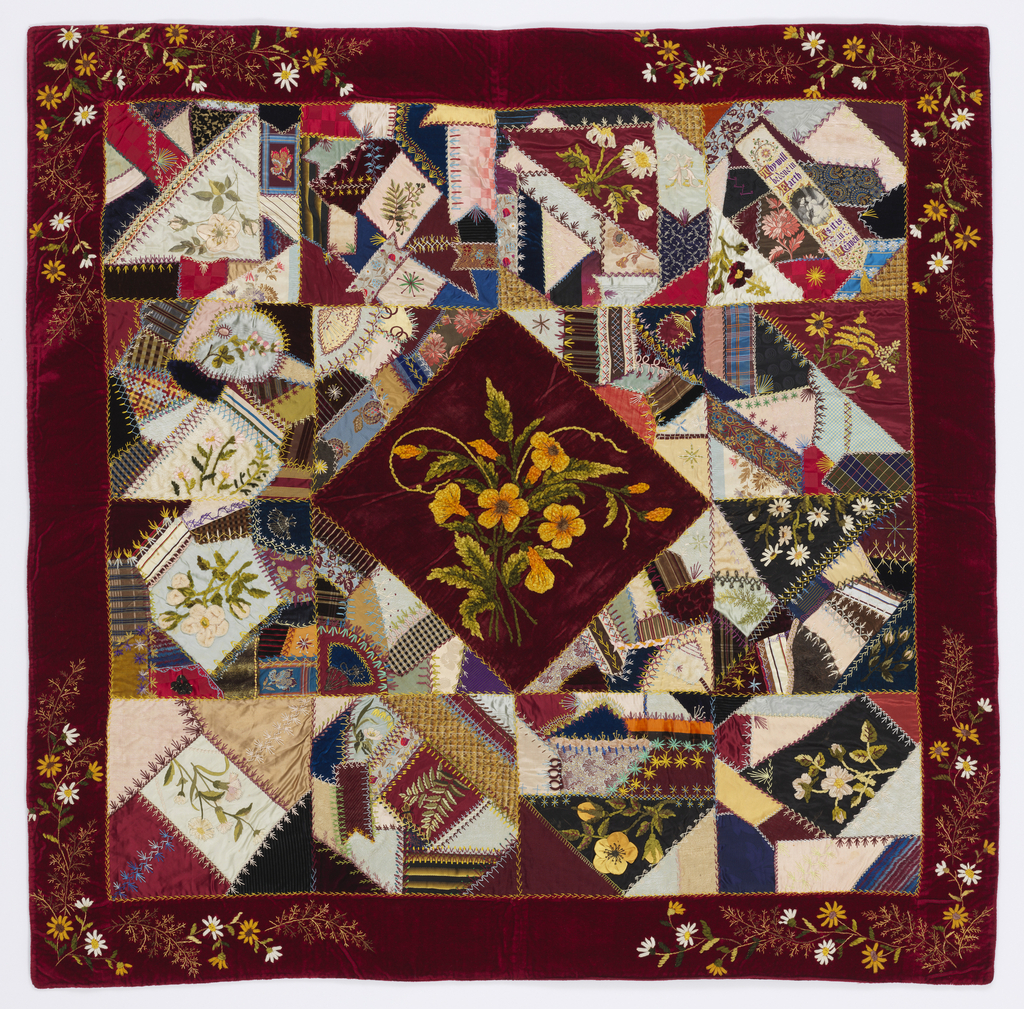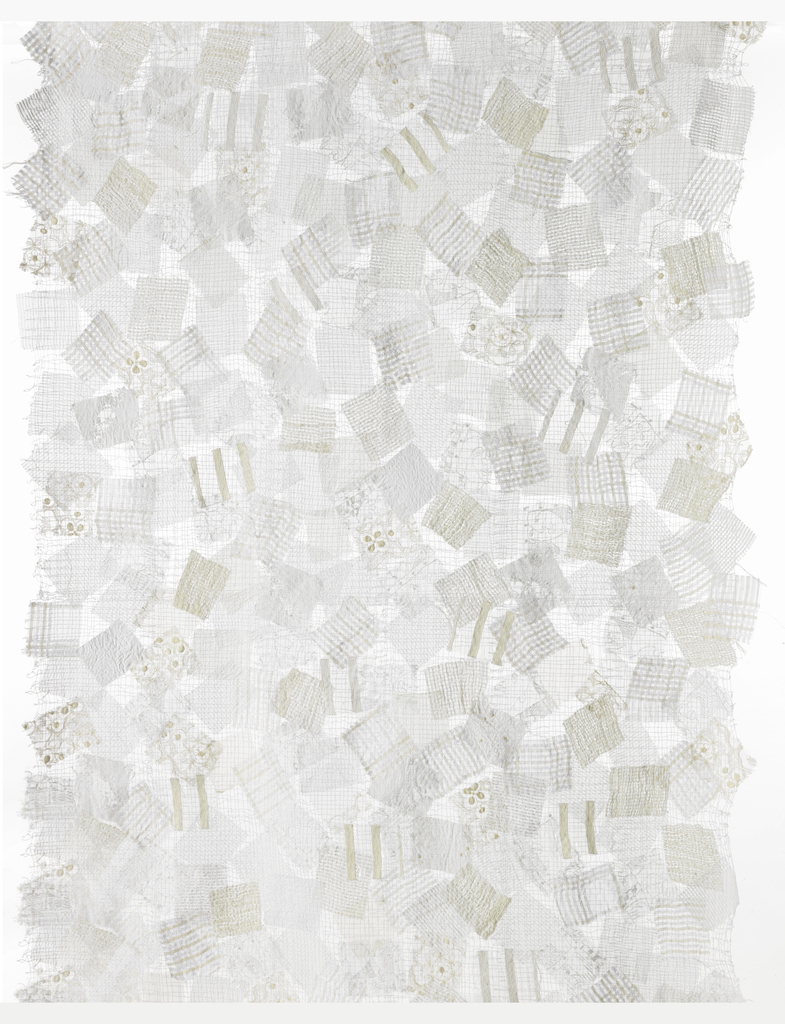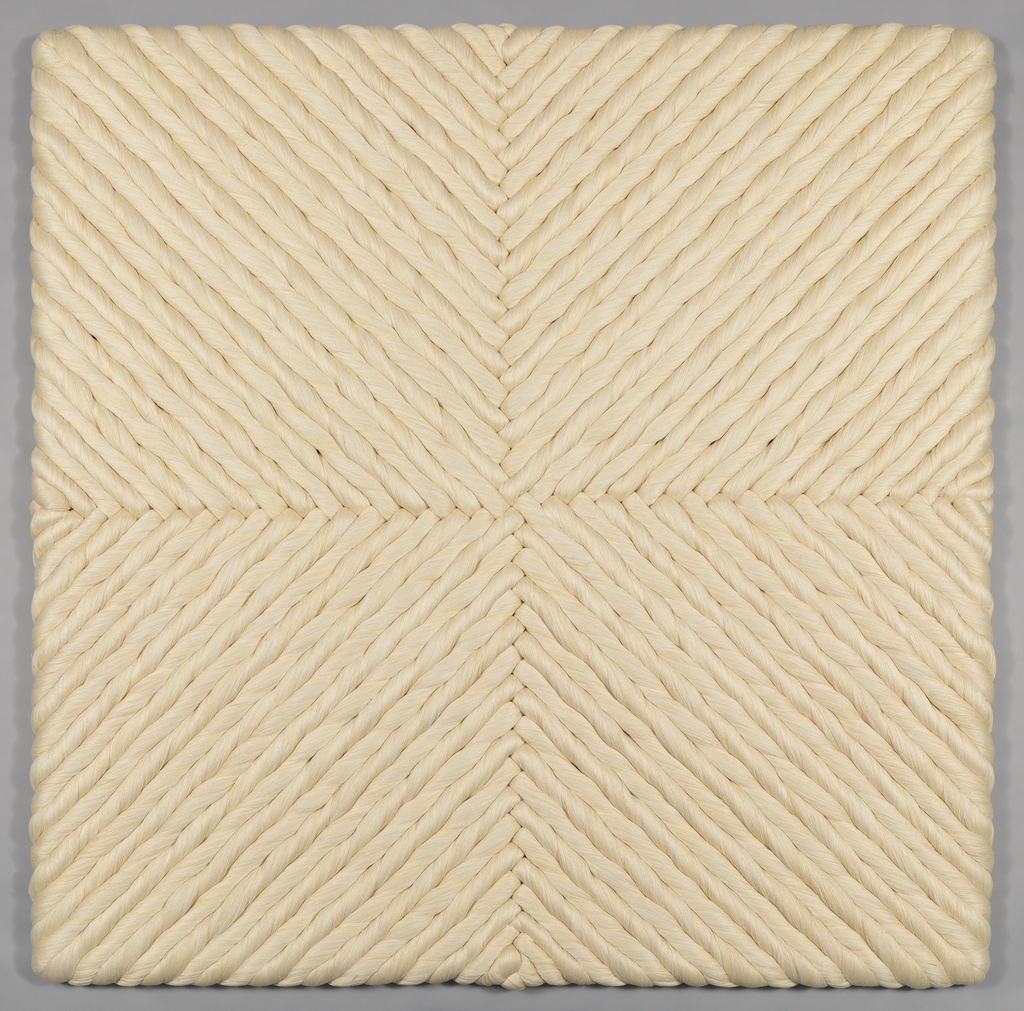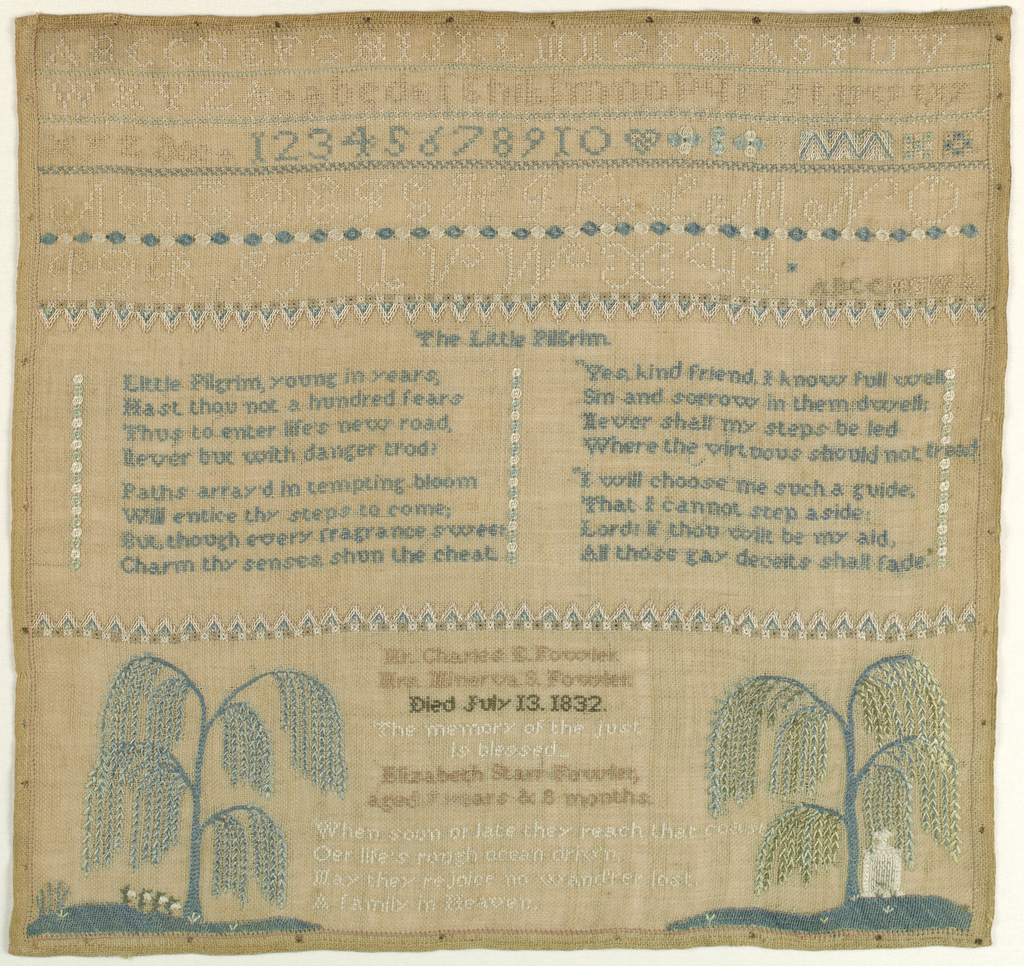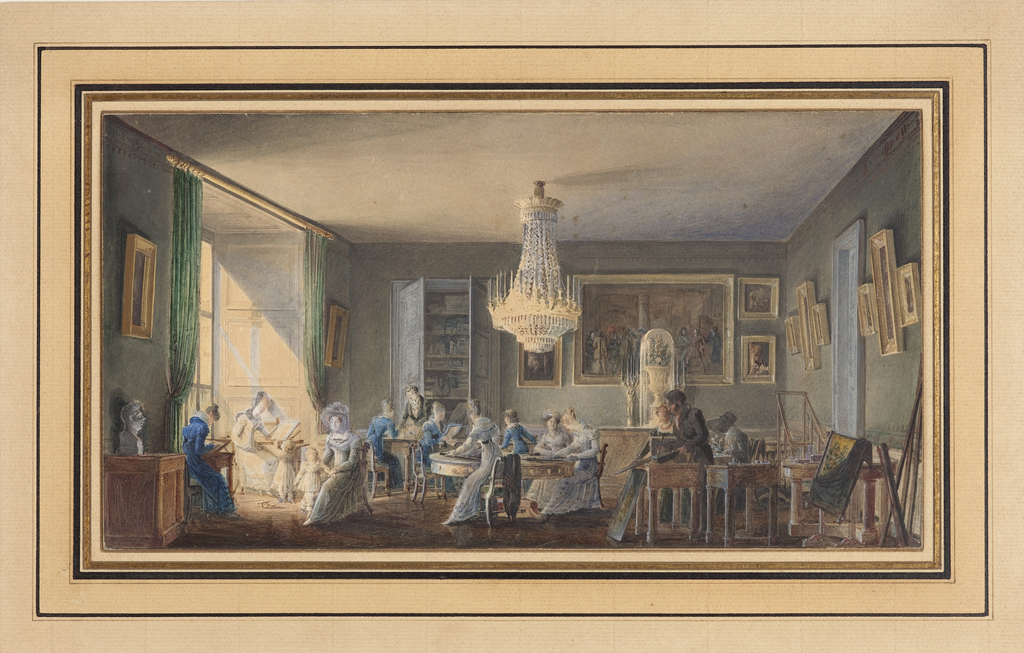Donated to Cooper Hewitt, Smithsonian Design Museum by New York-based textile dealer Elinor Merrell, this bedcover offers an opportunity to see how motifs employed in America were influenced by distant cultures. In the hands of a highly skilled needle-worker deft at using stem-stitch, satin-stitch, and button-hole stitch techniques, a rare coverlet was created. This block-style...
From the archives, an Object of the Day post on an example of iridescent design from the collection.
Akira Minagawa opened his first minä perhonen fashion boutique in Tokyo’s Shirokanedai district in 2000, and began showing his collections in Paris in 2004. Forest Parade, introduced as part of the Spring/Summer 2005 collection, has become an iconic design for the brand. “Perhonen” means butterfly in Finnish, and this design includes butterflies, birds, flowers, branches,...
Sally Follansbee’s 1787 sampler is part of a group of samplers from the towns of Newbury and Newburyport, Massachusetts. These works can be identified by a number of motifs that were reused and modified from the 1750s through the early 1800s. The stylized floral band on Sally’s piece appears on samplers by several Newbury and...
Cooper Hewitt is fortunate to have in its collection two quilts made by close relatives: Caroline Hammond Reed and her daughter-in-law, Frances Kingsley Reed, from Anderson, South Carolina. Both quilts were donated by Helen Allen Stanbury, a New Yorker who was a native of Anderson. Frances Kingsley Reed (1845–1902), wife of Caroline Hammond Reed’s son...
In celebration of Women’s History Month, March Object of the Day posts highlight women designers in the collection. Tsugihagi was designed by Reiko Sudo, one of Japan’s most important contemporary textile designers. Educated at Musashino Art University, she and Junichi Arai (Japanese, 1932–2017) were the co-founders in 1984 of the Japanese company and store, NUNO,...
In celebration of Women’s History Month, March Object of the Day posts highlight women designers in the collection. Cour de Rohan, which bears the name of Sheila Hicks’s home in Paris, is an example of the artist’s “macro-embroidery” process, a scaled-up version of the embroidery stitch known as point de couchage or point lancé et...
This sampler was worked by nine-year-old Elizabeth Starr Fowler (1822–1904) shortly after the death of her mother. It is unusual in that it combines elements of a traditional alphabet sampler with those of a mourning piece. At the top of the sampler are several rows of alphabets followed by a verse. The bottom section includes...
This Object of the Day celebrates one of many treasured objects given by Clare and Eugene V. Thaw to Cooper Hewitt, Smithsonian Design Museum. It is republished here in memory of Eugene V. Thaw. Click on this link to read more about the Thaws and their gifts to Cooper Hewitt. Heads down with pencils and brushes...
